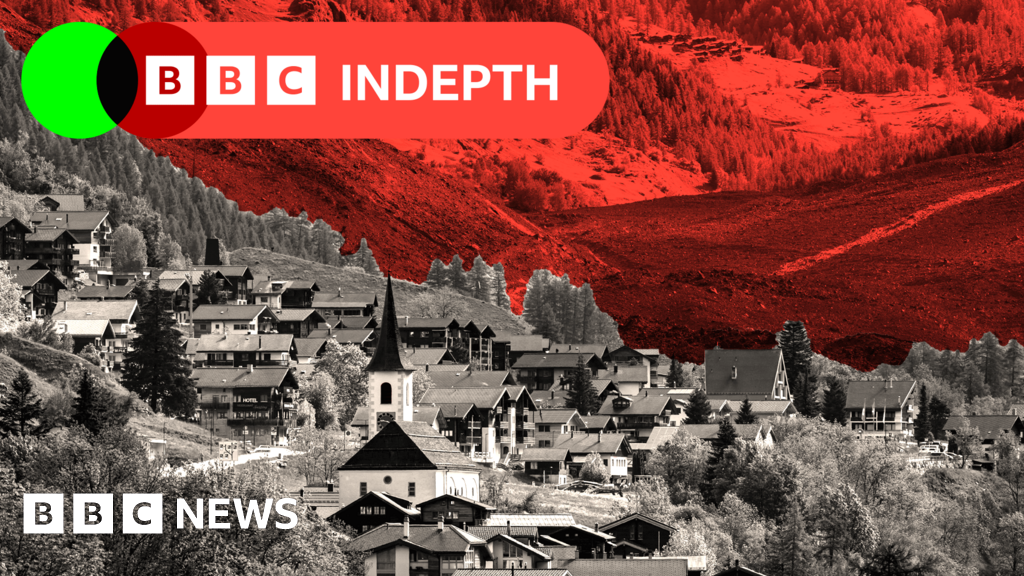
In the picturesque Loetschental valley of Switzerland, Matthias Bellwald, the mayor of Blatten, walks through the village of Wiler. He greets locals with a smile, but his mind is elsewhere. Just two months ago, his own village, Blatten, was obliterated when a part of the mountain and glacier collapsed. Fortunately, the 300 residents had been evacuated days earlier following geologists’ warnings. However, they lost their homes, church, hotels, and farms.
Lukas Kalbermatten, whose family-owned hotel was destroyed, reflects on the loss. “The feeling of the village, all the small alleys through the houses, the church, the memories you had when you played there as a child… all this is gone,” he says. Now residing in Wiler, Kalbermatten and Bellwald are part of a massive clean-up and rebuilding effort, estimated to cost hundreds of millions of dollars. The question remains: is the investment worth it?
The Cost of Protection
Switzerland, with two-thirds of its terrain mountainous, faces a growing threat from melting glaciers and thawing permafrost. These natural changes are increasing the likelihood of landslides, prompting the government to spend nearly $500 million annually on protective structures. However, a 2007 report for the Swiss parliament suggested that real protection could cost six times more. This raises a critical question: should the country continue investing in these areas, or consider relocating residents?
“Protecting areas will be costly. Switzerland spends almost $500m a year on protective structures.” – Swiss Parliament Report
The cultural significance of the Alps is deeply ingrained in Swiss identity. Each valley, like Loetschental, has its own unique culture. Kalbermatten recalls proudly showing hotel guests the ancient wooden houses of Blatten and teaching them Leetschär, the local dialect. The loss of Blatten has sparked fears about the potential disappearance of alpine traditions.
Climate Change and Unpredictable Landslides
As Blatten lies buried under rock, mud, and ice, the mountain above remains unstable. Residents initially believed the evacuation was precautionary, expecting to return home soon. Fernando Lehner, a retired businessman, describes the day of the landslide as unforgettable. “We knew there would be a landslide that day… But it was just unbelievable. I would never have imagined that it would come down so quickly,” he recalls.
While residents are eager to rebuild, climate scientists warn that global warming is exacerbating risks in alpine regions. Matthias Huss, a glaciologist at Zurich’s Federal Institute of Technology, explains that climate change contributed to the Blatten disaster. “The thawing of permafrost at very high elevation led to the collapse of the summit,” he notes. His team has recorded significant glacier shrinkage and rising alpine temperatures.
“These events are becoming more frequent, but also more unpredictable.” – Matthias Huss, Glaciologist
A 2024 study by the Swiss Federal Research Institute confirmed that climate change is “rapidly altering high mountain environments,” affecting the frequency and magnitude of alpine mass movements. However, quantifying the exact impact remains challenging.
Evacuations and the Debate on Relocation
Other Swiss villages face similar threats. Brienz, in the Graubünden region, was evacuated over two years ago due to mountain instability. Heavy rains have heightened concerns of an imminent landslide. In Kandersteg, Bernese Oberland, a rockface threatens the village, prompting evacuation plans. Such unpredictability is causing widespread concern.
In the wake of the Blatten disaster, questions about the future of other villages have emerged. An editorial in the Neue Zürcher Zeitung questioned Switzerland’s wealth distribution model, which supports remote mountain communities. The article suggested that residents in risky areas should consider relocation.
“Because such incidents are becoming more frequent due to climate change, they are shaking people’s willingness to pay for the myth of the Alps.” – Neue Zürcher Zeitung Editorial
For many Swiss, the concept of “heimat” is deeply rooted. It represents more than just a home; it’s a connection to childhood memories and cultural heritage. Kalbermatten emphasizes the importance of preserving these ties, fearing that depopulation could lead to cultural loss, as seen in some areas of northern Italy.
Preserving Alpine Heritage
Boris Previsic, director of the University of Lucerne’s Institute for the Culture of the Alps, argues that the Swiss once believed they had tamed the alpine environment through engineering feats. However, climate change has challenged this confidence. “The human-induced geology is too strong compared to human beings,” he asserts. Previsic believes that while infrastructure is crucial, flexibility and preparedness are equally important.
“In Switzerland, we thought we could do everything with infrastructure. Now I think we are at ground zero concerning infrastructure.” – Boris Previsic
In Wiler, the recovery operation is in full swing, with clean-up teams, engineers, and military personnel working tirelessly. Despite the scale of the task, there is a shared determination to rebuild. “If we see someone from Blatten, we hug each other,” says Kalbermatten. “Sometimes we say, ‘it’s nice, you’re still here.’ And that’s the most important thing, we are all still here.”







